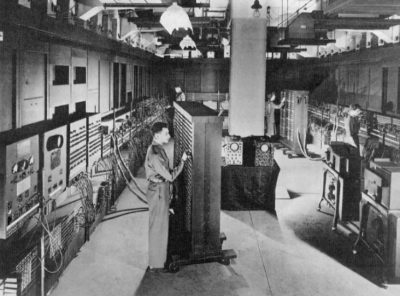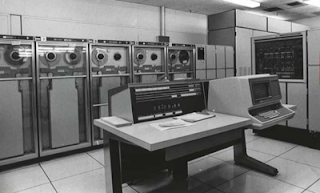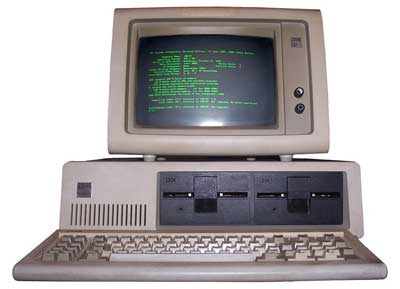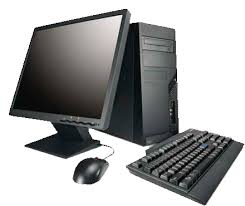What Is Computer? History Of Computer
History of Computer
The development of computers started from the 16th century and today's modern computer is the result. After each generation, the size, functionality and functionality of computers have greatly improved. The present day computers are quite modern and developed. During the period of development, computers have undergone considerable changes. Which has given birth to new generations of computers, which we know as Generation of Computers.Charles Babbage is called the father of modern computer, the principle of inventing the first computer was got from him.
Generations of computers
- First generation computers (1940 – 1956)
- Second generation computers (1956 – 1963)
- Third Generation Computers (1964 – 1971)
- Fourth Generation Computers (1971 – 1980)
- Fifth generation computers (present and future)
first Generation computers
Vacuum tubes were used in the first generation 1956 computers. A vacuum tube was a glass device that created a vacuum by removing gas. Vacuum tubes had electrodes to control electron flow and were used as a switch or amplifier in early computers. It could control electronic signals. These vacuum tubes were used for calculations as well as for storage and control. The first electronic computer was the "ENIAC". It was invented by J. Presper Eckert and John William Mauchly at the University of Pennsylvania ENIAC was about 30 to 50 feet long, weighed 30 tons, required 18,000 vacuum tubes, 70,000 registers. , 10,000 capacitors and 150,000 watts of power were required. The first generation computers were very large and heavy in size, required a large room to maintain and emitted a lot of heat, so the proper functioning of the computer required an air conditioner. The "ENIAC" was first used in World War II to build the hydrogen bomb to make difficult calculations. Later, it was used to forecast the weather, solve mathematical problems in space research, and other scientific tasks, but due to its very slow speed, it was quickly discontinued. After ENIAC, John Presper Eckert and John William Mauchly invented the "EDVAC" (Electronic Discrete Variable Automatic Computer) in the year 1946. In EDVAC, the programs as well as the running data were also stored in the memory and both the data and information were being processed very fast. In 1952 Eckert and Mauchly also developed the first commercial computer "UNIVAC" (Universal Automatic Computer).

Second Generation of Computers (1956 – 1963)
In second generation computers, the vacuum tube was replaced by a "transistor". It was developed by William Shockley in 1947. Computers had become smaller, faster and cheaper in size. They used less energy than before. Programming on these computers was possible; this generation of computers was mainly used in nuclear power plants. Magnetic tape was used as memory in this. The time period of Second Generation of Computer was 1956-1963, which was based on "Transistor" technology.

Third Generation of Computers (1964 – 1971)
In third generation computers, Integrated Circuit or I.C. was used. An IC (Integrated Circuit) is a complex chip, consisting of many transistors. The IC was invented on 12 September 1958 by Jack Kilby, an electrical engineer at the Texas Instruments Company. The ICL 2903, ICL 1900, UNIVAC 1108 and System 1360 were the main computers of this generation.

Fourth Generation of Computers (1971 – 1980)
The microprocessor microprocessor was used in the fourth generation computer itself. These computers are currently in use and are being developed further. The microprocessor was invented in 1971 by Marcian E Huff.
0 and 1 were coded for computer operation. Where does this binary number go? Some computers of this generation were too small to fit in the palm of your hand. These computers were designed to be smaller, faster and cheaper and used in general. The mouse and other peripheral devices, such as joysticks, were developed in the generation of this computer. Computers could be linked together in a network to communicate with each other, this has played an important role in the development of the Internet.

Fifth Generation of Computers (1980s and Future)
The fifth generation of computers is in the form of modern computers that we are using nowadays. The fifth generation computer is based on ULSI (Ultra Large Scale Integration) technology. Artificial intelligence capability is being developed in this generation computer.
The ability to think in computers is being developed because computers can work in every field and to some extent success has also been achieved, for example Windows Cortana, Google Assistant, Apple Siri ) etc. you are looking at. High level programming language is being used in this. It is being made more simple with the help of GUI (Graphical User Interface). These computers use the Internet because they are connected through a network. Some computers are being designed to behave like humans and do all the work by themselves, which are called robots.

